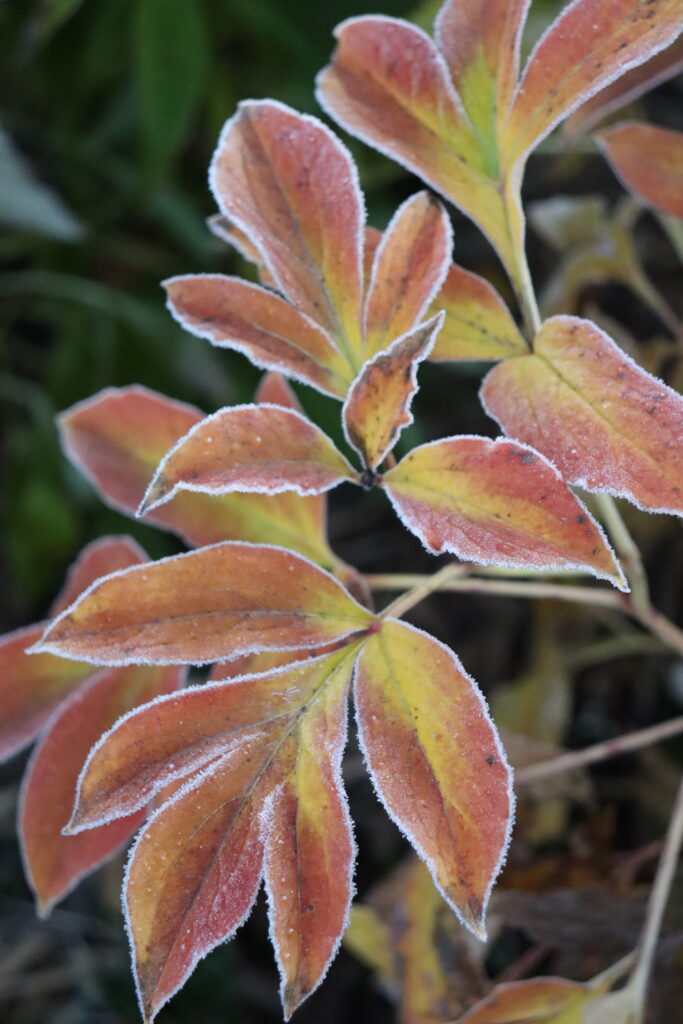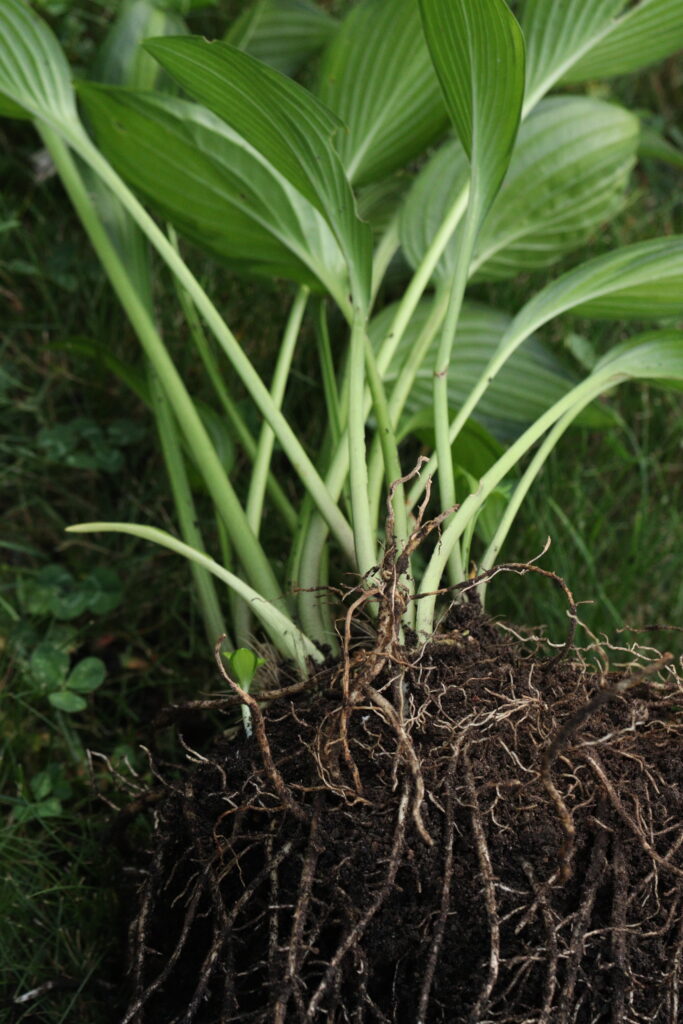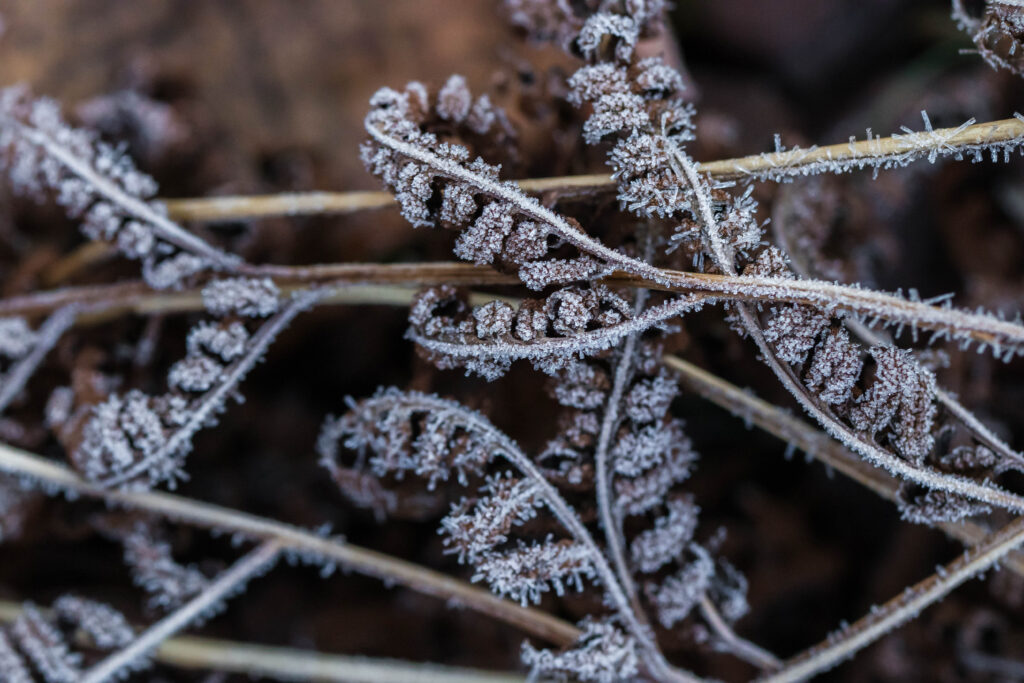By Sue Healey – Tillsonburg Horticultural Society
Of all the gardening seasons, Autumn may be my favourite. I love it for its contrasts. Warm days filled with sunshine, mornings of sharp frost and swaths of colour in a rich and diverse palette. October hillsides are still awash in waves of golden rod. Their frothy flower heads break against the scarlet humps of sumac, forming eddies around the pools of purple asters. Along the roadsides native grasses nod their burnished heads in greeting as we pass. The browns are still golden and there is enough green to highlight all of it. October is bold and vibrant and all the more lovely for the frost to come. It’s a good month to be outside and an excellent one for garden work. Moderate temperatures and the eventual autumn rains make this an ideal time for garden projects whether they be renovations, additions or removals.
While my own garden is full and well established there is always some plant that wants moving or sharing. Most plants prefer division in autumn when cool temperatures and rain make the move easier, for plant and gardener. Spring blooming plants; peonies, iris, rose, and clematis can all be moved now. Most of these have finished flowering and root disturbance won’t jeopardize the display. Late bloomers, think grape leaved anemones, chrysanthemums and sedum, would be better moved in spring. An early spring planting gives them time to reestablish themselves and still produce flowers in the same year.
This year’s project includes the removal of a decade old peony(Paeonia). Peonies are long lived perennials that rarely need division. When they do, a strong back and a good set of garden forks will make the job easier. Working the forks gently around the clump will eventually pry it out. It’s always harder than I imagine. Those roots cling so desperately that I always have a moment of doubt! But it does let go after a few more rounds. Peony roots are both woody and brittle and are easily broken.Once out of the ground, they can be trimmed and separated intoIndividual crowns, each with 3-5 stalks or growing tips. Divisions should be replanted immediately with no more than 5 cm (2 inches) of soil covering growing tips. Planting any deeper results in foliage and no flowers. As with all new plantings, water well and regularly until the ground freezes. Peonies may take a year or two to resume flowering after being disturbed but won’t need to be moved again for decades.
Siberian and Japanese Iris are also on the list this year. Both need frequent division to remain vigorous and promote blooming. Siberian Iris (Iris siberica), with its fleur-de-lis blooms and grass like foliage is tough enough to handle being divided every 3-4 years. Clumps are lifted out whole and cut into manageable wedges using a sharp spade or knife. Japanese Iris (Iris ensata) stands up to the same treatment and will bloom the following spring without missing a beat. Both require rich, moisture retentive soil and full sun to produce years of spectacular blooms.
Daylilies are among the few perennials that can be moved in either season. Hardy and resilient, daylilies will bounce back within weeks of replanting. Garden forks are the tool here again.I like to work my way around the plant – rocking, poking, pushing. Sometimes cajoling, sometimes swearing. A few rounds and eventually the centre moves, and once it does, you have it. After the clump is out of the ground, two garden forks, inserted back-to-back through the centre of the plant will pry it in two. This can be repeated on each section until you have the sizes you want. Smaller divisions fare better than large.
Foliage plants such as Hosta, Bergenia and ferns are also best moved or divided in autumn. In early spring, newly emerging leaves are delicate and easily damaged. Whatever damage you do in spring is there all year. Better to divide them at the end of the season when leaves are at the end of their life. Hostas can be uprooted and divided in the same manner as daylilies, if a bit more gently. Treat Bergenia and ferns as you would peonies. Both plants have roots with growing tips that should be shallowly replanted. Rich soil that is consistently moist will result in healthy, vigorous growth.
Of course, there are always extras when you divide a plant. If space or time is at a premium, consider potting up those extra plantlets. Many trees, shrubs and perennials can be overwintered in pots if given the right conditions. A trench dug deep enough to sink the entire pot, backfilled with soil and covered in deep piles of snow will ensure your plants survive the winter. Easier to achieve, but riskier, is lining them against a wall or hedge and covering the pots with leaves to insulate against the cold. Come spring, you will have decisions to make and plants to give. Consider donating extras to the Tillsonburg Horticultural Society’s annual garden auction. The society is an excellent way to give your divisions a new home.
This month’s speaker is Ben Porchuk of Carolinian Canada. Just in time for fall planting, he will be sharing tips on how to use natives in our own gardens and outdoor spaces.
Tuesday, October 1, 2024, Tillsonburg Seniors Centre, 7:30 pm
$20/year $4/meeting
Come as guest, stay as a member.
📷 S Healey


